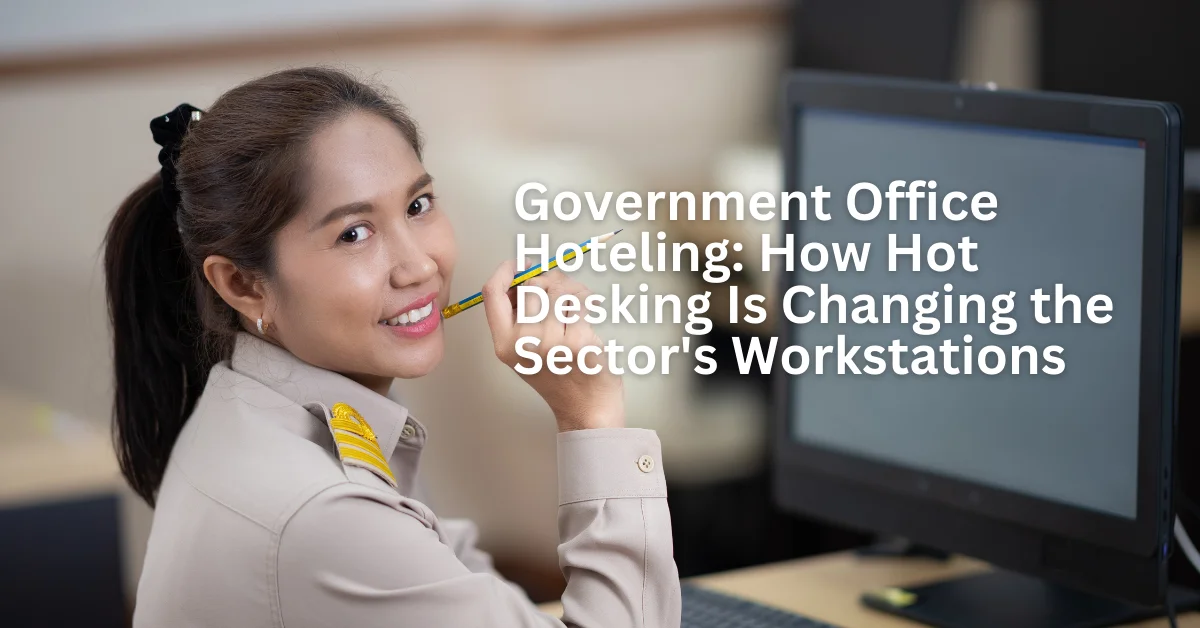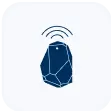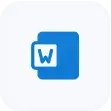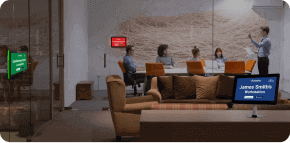Blog

Government Office Hoteling: How Hot Desking Is Changing the Sector's Workstations
Today’s workplace differs significantly from a few decades ago due to increased remote work. When considering travel and annual leave, it’s uncommon for a fully staffed government facility. Using the traditional work system, it can be expensive and ineffective to provide a permanent workplace for each team member.
Government offices’ activity-based working requires more management of space and resources. Hence, the traditional method for government workers to go to their designated desks and time offers no flexibility. Moreover, careful planning boosts worker productivity by decreasing the downtime of teams needing proper access to the required space.
Future hot desking and office hoteling systems are now part of hybrid workplace experience platforms. Hot desking programs provide government employees with endless flexibility, grasp hybrid policies, and better space utilization.
Hot Desking: What is it and Why is it Popular in Government Offices
Government offices are usually hectic at all times of the work week. A program that helps workers and administrators maximize space and time on activity-based work enhances output.
The applications for resource hot desk software are limitless. Hence, the hot desk system ranges from meeting room booking, team calendar management, and parking spot reservations. The use of resource and meeting scheduling software significantly benefits municipalities, city offices, and other government entities.
Today, its office workers enhance productivity with flexible hours. Hot desking is a practical solution for employees who do not require a permanent desk. The booking solution can work remotely from home or outside of office hours.
Four Hot Desking Methods of Improving Government Departments
Hot desking lowers facility costs by reducing the total amount of workspace required. It’s also an excellent way to provide employees with autonomy and flexibility. Government offices have various departments requiring different features to offer the best services.
What does a hot desk mean for government employees and their departments? The following are some trial-run ideas that, hopefully, will lead to a more comprehensive hot desking policy:
1. Streamlined Reservation Procedures
A system of order is necessary for effective hot desking. The employees and those managing them require a mechanism to check in at the desk they are now using. There are numerous methods for centralizing and standardizing check-in.
At the departmental level, reporting to the team leader is the simplest. As the system grows in size, facility managers take on this role. When fully implemented and automated, check-ins are through:
- Team member IDs
- Kiosks
- Login credentials
What matters is that there is a standardized method of recording desk usage and team member location.
2. Alphanumeric Identifiers
It’s impossible to overstate the value of centralized office space hoteling software. Assigning desks is simple, while managing those workspaces depends on a centralized recognition system. An alphanumeric code is the primary desk identification type for creating a structure. Working with hot desking systems is simple when everyone knows which desk is which.
The numeric portion of the ID code serves as the desk’s unique qualifier. It’s critical to determine which desk in the department is in use. The alphanumeric numbers also determine usage and utilization from a broader management perspective. Aligning alphanumeric desk codes saves time and confusion.
3. Color-Coded Desks
Color coding is a simple way to organize desks, workspaces, and conference rooms. Organized and color-coded desks help create an office space report more straightforward. Colors provide comprehension the same as alphanumeric codes in identifications and management.
A color-coding desk is an easy method to distinguish which desks are which. Team members, administrators, and guests to identify workspaces and other areas. For example:
- Area and desk type: Workspaces, conference rooms, and desks have different colors based on their type. For example, yellow-coded areas have projectors, and green ones are cubicles.
- Department: It’s easier to have different government branches have their colors for faster identification. (Accounting is red, Health is green, and the Police is blue).
- Reservation Status: The status of each space is easily identifiable with colors such as red, yellow, and green. Red can represent occupied, yellow is in progress, while green is available.
- Create Configurations
Miscommunication about who owns which desks is a common concern with hot desking. Configurations are the most straightforward way to address this and do hot desking work at the departmental level.
Allowing configurations is a compromise between total autonomy and individuality. Employees know their workspaces and team members they will share in activity-based work. Room reservation systems allow everyone to select their accommodations distinguishes them. The system binds a group together under a manager or team leader, which aids in maintaining the hierarchy.
Gather Feedback and Make the Necessary Adjustments
The hot desk system at the government departmental level is excellent for staff establishing flexible work arrangements and implementing order while encouraging flexibility while knowing which areas need improvement. The reports from office space use help administrators understand which areas require more attention.
The open plan space is far from the traditional nine-to-five work hours with designated desk space. Office guests no longer need to wait in lines for their turn. These guests can create an appointment in kiosks, on their phones, or from their computers.
Conclusion
A modern government office needs a meeting room management system that replaces manual booking methods. Meeting room management can boost productivity and morale while using office space better. Unlike the traditional office setup, workers in an open-plan office have more freedom to work where they want.
Hot desking and hybrid work well together. Hot desking has a variety of benefits for daily activity-based working. The system is efficient for room reservation, hybrid work, space utilization, cost savings, and improving team member engagement are vital.
The proper tools and training assist government workers in efficiency while being flexible. More guests and employees experience better reliability and accessibility with a compatible hot desking solution in their department.















































 Support
Support  Demo
Demo  Blog
Blog